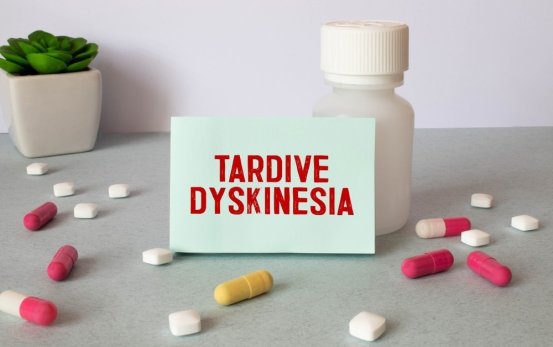

Exploring tardive dyskinesia requires examining its origins, clinical signs, and impact on everyday life. Defined by involuntary and repetitive movements that commonly affect the face and extremities, this disorder often develops after long-term use of certain medications. Although difficult to manage, understanding its underlying mechanisms and available treatment options equips individuals with the knowledge to face the condition more confidently and effectively.
Exploring tardive dyskinesia requires examining its origins, clinical signs, and impact on everyday life. Defined by involuntary and repetitive movements that commonly affect the face and extremities, this disorder often develops after long-term use of certain medications. Although difficult to manage, understanding its underlying mechanisms and available treatment options equips individuals with the knowledge to face the condition more confidently and effectively.

Tardive dyskinesia is a neurological disorder marked by recurring, uncontrollable movements of the face, tongue, and body. These motor disturbances generally arise following prolonged use of drugs that block dopamine receptors in the brain. It is most frequently linked to ongoing psychiatric treatment, though it may also occur in other contexts where dopamine-modulating medications are prescribed. The root cause is tied to changes in receptor sensitivity and brain circuitry, though the severity and type of symptoms can differ greatly from person to person.
The hallmark of tardive dyskinesia is involuntary, repetitive motion. Common manifestations include grimacing, tongue movements, lip smacking, and frequent blinking. In some cases, abnormal movements extend to the arms, legs, or torso, ranging from minor twitching to more dramatic, dance-like gestures. While symptoms are often persistent, intensity may vary over time. For some, the condition is mild and minimally disruptive; for others, it can interfere significantly with daily function, relationships, and quality of life.
The disorder is strongly associated with extended exposure to dopamine receptor-blocking agents. Rather than an immediate reaction, tardive dyskinesia reflects long-term changes in how these receptors function. Factors that elevate risk include:
Prolonged duration and higher dosage of medication use
Advanced age, with older individuals more susceptible
Possible genetic influences on dopamine receptor sensitivity
Coexisting neurological or metabolic conditions that heighten vulnerability
Because the risk rises with time, medical professionals stress ongoing observation for early warning signs. Identifying symptoms promptly can make management more effective.
Accurate diagnosis relies on a thorough clinical review, detailed history-taking, and direct observation. Physicians use standardized rating scales to assess frequency, severity, and impact of the movements. Because symptoms may fluctuate, assessments are often repeated across several visits. Reviewing medication records—such as dose, length of use, and treatment changes—is crucial for establishing connections between drug exposure and abnormal movement. Specialists may also be consulted, and additional assessments performed, to rule out other disorders, ensuring the diagnosis is precise.
Effective management typically requires balancing the benefits of necessary medications with their risks. Strategies may include reducing the dose or discontinuing the causative drug, though this must be done cautiously to avoid compromising treatment of the underlying illness. Pharmacologic therapies that regulate dopamine activity may be considered, though careful monitoring is essential due to potential side effects. Supportive measures, including physical or speech therapy, can help restore functional ability and improve daily living. Given the disorder’s complexity, treatment plans should be individualized and regularly reviewed to optimize outcomes.
Recent studies have deepened understanding of the biological mechanisms behind tardive dyskinesia and informed new therapeutic approaches. Research highlights include examining metabolic and molecular pathways that affect receptor function and brain plasticity. These insights are fueling trials of novel drugs aimed at reducing risk while maintaining therapeutic benefit. Progress in diagnostic tools, including imaging and biomarkers, may also enable earlier detection and more precise monitoring of disease progression, allowing for timely intervention and improved patient outcomes.
Living with tardive dyskinesia presents social, emotional, and practical challenges. Daily routines, work, and social interactions may all be affected by visible involuntary movements. Addressing quality of life involves more than medical treatment. Participation in support groups, counseling, or stress-reduction programs can ease emotional burdens. Mindfulness, behavioral therapy, and coping strategies further help individuals adapt. The role of family and caregivers is equally important—offering encouragement, patience, and involvement in care can significantly improve overall well-being.
Looking ahead, advances in personalized medicine hold promise for tailoring treatments to individual risk profiles, genetic predispositions, and clinical needs. Increasing professional awareness and early recognition of movement abnormalities will further help in adjusting therapies before the condition worsens. Innovative technologies, improved therapies, and stronger patient education are expected to create a more proactive approach. As research evolves, emphasis will be placed on integrating medical treatment, psychosocial support, and preventive strategies, ensuring a more comprehensive care framework for those affected.
Tardive dyskinesia is a complex neurological disorder that requires careful balance between the therapeutic benefits of treatment and the risk of adverse movement effects. Understanding its defining signs, risk factors, and diagnostic process is key to proper management. Despite its challenges, ongoing research and evolving therapies provide hope for improved outcomes. By combining medical innovation, early detection, and holistic support, healthcare providers and patients alike can work toward reducing its burden and enhancing quality of life.